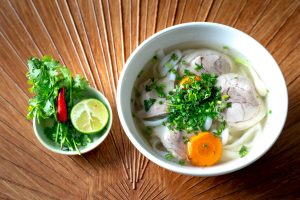Hyper-Local & Foraged Foods: The Ultimate Sustainable Choice
When it comes to making sustainable choices, many of us immediately think of reducing our carbon footprint or using renewable energy sources. But what about the food we eat? While organic and locally-sourced options have gained popularity in recent years, there is another sustainable food trend that is making its way onto plates around the world – hyper-local and foraged foods. These ingredients, often overlooked in traditional grocery stores, offer a variety of benefits for our health and the environment. In this article, we’ll explore why hyper-local and foraged foods are considered the ultimate sustainable choice.
What Are Hyper-Local & Foraged Foods?
Hyper-local and foraged foods are those that are sourced from small, nearby farms and forests, respectively. While they may seem like the latest food trend, these practices have actually been around for centuries. In the past, people relied on the land around them for food, gathering berries, roots, and other edible wild plants. Today, with the rise of industrialized agriculture and globalization, this knowledge has been lost and commercial produce has become the norm. However, with the growing concerns over climate change, food waste, and unsustainable agricultural practices, there has been a renewed interest in consuming hyper-local and foraged foods.
The Benefits of Hyper-Local Foods
One of the main benefits of hyper-local foods is their reduced environmental impact. These foods are often grown in small-scale, sustainable farms that use organic farming methods and do not rely on harmful pesticides or chemicals. This not only helps to protect and preserve the soil, water, and air, but also reduces the carbon emissions associated with transporting food long distances.
In addition, hyper-local foods are often picked at the peak of ripeness, ensuring that they are packed with nutrients and flavor. Unlike store-bought produce that may have been picked and shipped weeks ago, hyper-local foods offer a level of freshness that cannot be matched. This also means that they do not need to be stored for long periods of time, reducing food waste.
The Benefits of Foraged Foods
Foraged foods, on the other hand, come directly from the forests and fields around us. These can include a variety of wild greens, mushrooms, nuts, and fruits. They are completely natural and free from any additives or processing. Foraged foods are also highly nutritious, often containing higher levels of vitamins, minerals, and antioxidants than their cultivated counterparts.
Moreover, foraging can help to reduce the strain on our food system. With the growing world population and the increasing demand for food, traditional agriculture alone may not be able to meet our needs. Foraging provides an alternative source of food that is readily available and does not require any additional resources to produce.
The Role of Hyper-Local & Foraged Foods in Sustainable Eating
Including hyper-local and foraged foods in our diets can have a significant impact on the environment and our health. By consuming locally-grown produce, we support small, sustainable farms, reduce our carbon footprint, and promote biodiversity. Similarly, foraging for wild foods promotes the preservation of natural habitats and helps to maintain a healthy ecosystem. In addition, by reducing our reliance on industrialized agriculture, we can decrease the amount of food waste and contribute to a more sustainable food system.
While hyper-local and foraged foods may not be as convenient or readily available as their commercial counterparts, they offer a variety of benefits that cannot be ignored. Next time you’re at the grocery store or planning your meals, consider incorporating these ultimate sustainable choices to not only support the environment, but also your own health and well-being.










